#bioluminosity
Text

wishing a happy birthday to @mywitness <3
8 notes
·
View notes
Photo

August 9, 2022:
Cobalt Secondary, Banescale, Stained.
Supernova of bioluminosity’s clan!
15 notes
·
View notes
Note
lilac bro
lilac: you make my dash better & i cherish you
💖💕💖 ty bestie
0 notes
Text
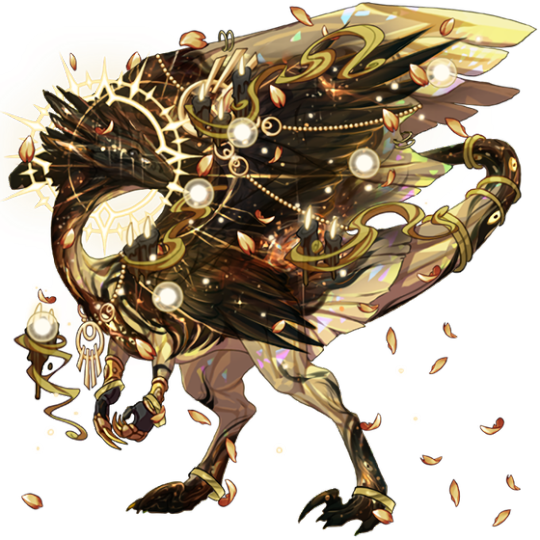
my rotten soldier, my sweet cheese, my good-time boy
#flight rising#fr#flightrising#fr dragon share#dragon share#fr gen 1#flight rising dragon share#fr gen one#fr wildclaw#he is goldenrod/goldenrod/mist#and his skin is 'new world order' by bioluminosity/mywitness#my space horror son!!!
15 notes
·
View notes
Photo

Drew Tuktirey, a Flight Rising dragon owned by @bioluminosity!
#flight rising#dragon#undertide#illustration#sea monster#sea dragon#flight rising fan art#fan art#fantasy art#my art#sketchmatters art#sketchmatters art tag
469 notes
·
View notes
Photo
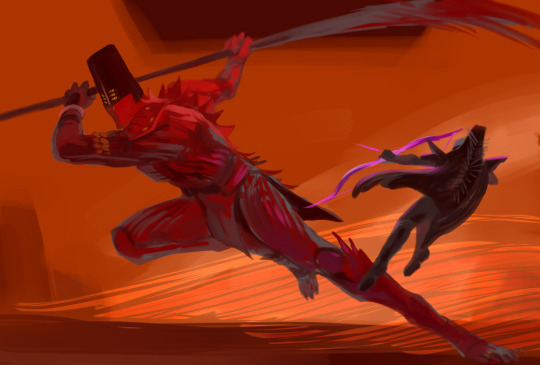

1. feat. @bioluminosity‘s hunter
2. gift misgivings
bonus: certified low empathy moment

407 notes
·
View notes
Text

Selective breeding of viperhounds by the Txepiva clans
The Txepiva clans, also known in some parts as the Ash People, have no ikran and no pa'li. They are long distance runners and hunters, often on the move. Many of them are nomadic pastoralists, a practice unknown among the rest of the known Na'vi.
Their habitat, in turn bleak and burnt or rich and green, rarely forms anything close to a forest. The clans are always on the move, frequently fighting over territory, and yet regularly meeting with others in great gatherings. The largest, meant to reunite all the disparate Txepiva clans, is called the Tsawlultxa, and is the perfect opportunity to discover and study the stunning variety of Nìsayntang.
Just like mankind adopted wolves and turned them into dogs, the Txepiva adopted the plains' viperwolves. Millenia of selective breeding created the Nìsayntang, which the RDA catalogues as viperhounds.
Most neighbouring clans outside the Txepiva look down on breeding, preferring to go in the wild to capture their own mounts. We're left to understand it verges on taboo. As usual, the Txepiva seem to hardly care or take notice of their neighbours' distaste.
The relative isolation of each clan has allowed for the development of several subtypes of Nìsayntang.
Some clans have hounds whose forward arms have evolved to grab prey, while in others it's the secondary pair, with the elongated fingers of the hand coming back to fold over the rib cage in a position reminiscent of the stunbat's secondary arms.
Another clan breeds specifically for hunting in low light visibility.
Here are some examples of breeds of Nìsayntang!
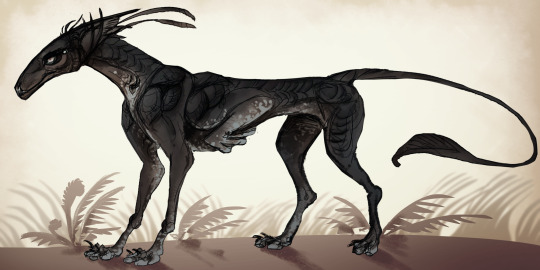
The most standard breed type, seen all across the plateaus and plains. They reach up to a Na'vi's knees or higher, much like a greyhound for humans. They're excellent runners and hunt as a pack, keenly aware of the Na'vi hunters movements. They can carry and manipulate objects with the prehensile limbs that have retracted against their chests. It's most commonly the middle pair of limbs, but as we'll soon see, some clans have bred hounds whose frontal limbs are the ones that evolved to hold and grab.
Nìsayntang are intelligent creatures, keen to help, and capable of understanding complex orders, especially through tsaheylu. This agile breed, quick on its feet, is favoured by the clans that raise srä‘etnaw (the livestock at the source of aforementioned pastoralism).
They'll assist their Na'vi with crafts, carrying things across the camp, leading scouting missions and reporting what they see, or for the best trained one, even hold the meat before it gets grilled! They also use their hands to grab stray srä‘etnaw pups and bring them back into the fold.
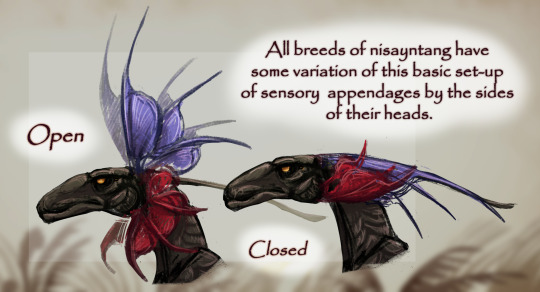
The facial appendages of Nìsayntang are flexible sensory organs. They help them sense their environment, but also play a major role in how they communicate between pack members. Think of the way wolves communicate with their ears, back on Earth.
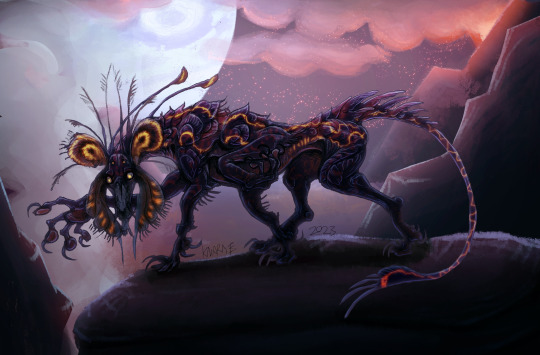
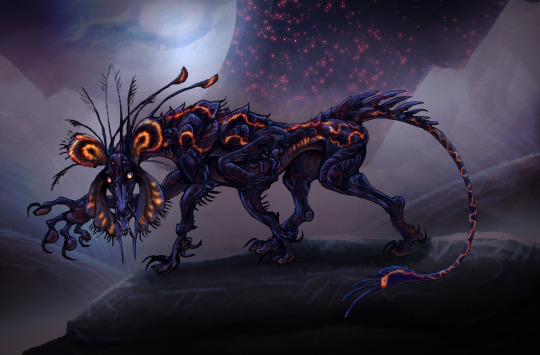
This variation is quite rare, and bred by a single tribe that favours night-time hunting and lives along black volcanic cliffs and lava fields. It's one of the darkest environments known in Pandora, especially during eclipse.
Their Nìsayntang have greater control of their natural bioluminescence, granting them better camouflage. Like a cuttlefish fooling its prey, they can modulate and increase the bioluminosity, creating alluring displays. The sensory strangeness causes their prey to freeze, equally curious and confused, and now vulnerable to ambush.
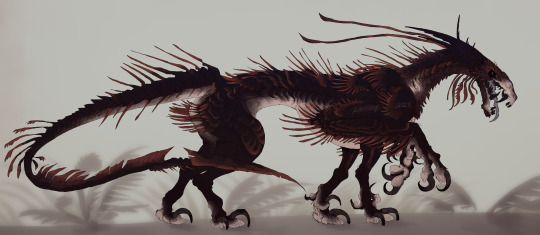
The stem-nisayntang were quite the genetically diverse and chaotic bunch, and the Na'vi of the Ash clans have been practising selective breeding on them for far longer than humans have with dogs.
This is an example of the aforementioned breeds in which it's the foremost limbs that have developed to extend and grab. It's the largest of the breeds presented in this study, as large to a Na'vi as a lion to humans, and aptly nicknamed "Leonin Hound" by first contact researchers. Their huge, heavy arms make them ambush predators, preferring bursts of speed and action to their cousins' long distance running. Their hands aren't as nimble or crafty, each fingers closer to sharp, robust talons.
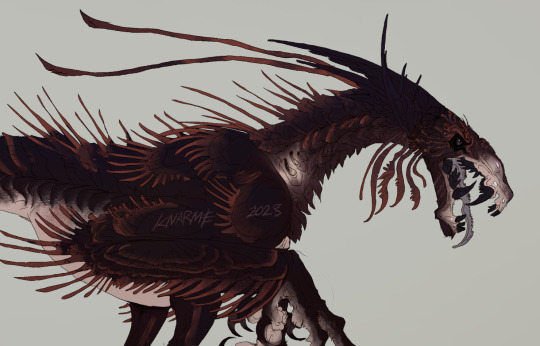
They have serrated teeth that tear through muscle and cartilage with unsettling ease. Their bite can even cut through most of the natural keratinous armour of Pandoran animals.
Their bodies are covered in bristles that help them sense vibrations in the air and ground. Those keen senses and efficient ambush tactics have gained them a reputation as “All-knowing guard hounds” among travellers who’ve met their keepers.
Despite the fearsome appearance and size, their pack mentality, as well as their ability to bond with their entire clan, make them desirable playmates for children, and it's not rare to see a couple of Txepiva youngsters tasked to guard toddlers and younger children, doing so with the help of their hounds. It's also quite common for them to ride on their back. Despite what a human might think of such a sight, it's as safe and natural to the Txepiva as riding an ilu as a child is for the Metkayina.
Bred to fend off the fearsome wildlife of the plains, the Leonin hounds are fiercely efficient at it and seem to have had their sense of fear bred right out of them. As such, they're one of the most widespread breeds in the plains. A handful of clans produce pups, and some are then traded at the great yearly Txepiva gathering. A clan might have their own specialised breed that has been living alongside them for untold generations, and still keep a couple of the Leonin hounds to help safeguard their camps.
Part I of @straydaddy (art and design) and @bluedaddysgirl (lore concept) in-world collaborative study, "Introduction to the Txepiva clans, their nomadic pastoralism and niche selective breeding practices in species of stingbats and viperwolves".
On twitter we are Knarme and Bluedaddysgirl
#avatar#atwow#avatar 2#jc avatar#avatar fan lore#fanart#viperwolf#space doggos#aliens#alien biology#xenobiology#xenozoology#speculative evolution#creature design#concept art#creature art#creature concept#alien concept#fan art#collaboration#alien design#alien creature#spec evo#spec bio#speculative zoology#speculative biology#na'vi#na'vi oc#nisayntang#pandora
157 notes
·
View notes
Text
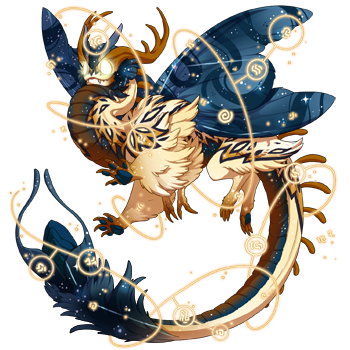
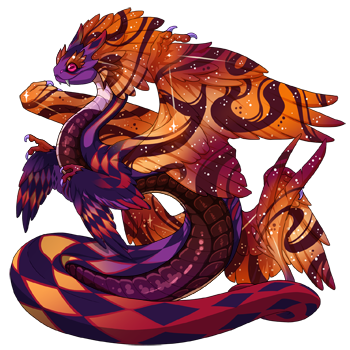

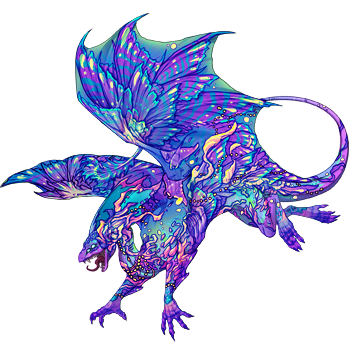
In a fit of annoyance that I am (really) sick once again for my birthday, decided to finish up a few expensive projects. Originally my Flaxen Flaunt pair was going to be Aethers, but I could never find another dragon with the right XYZ, so I decided on the XYY Undertides. The Auraboa is actually a gen one (a rarity for me) that I picked up for like 200g. Capsule is so lovely on Boa's <3
The Spiral is an oldie who I re-grened for the lovely skin by: my witness (formerly bioluminosity) and the Mirror is wearing a skin by: Psi!
19 notes
·
View notes
Text
This -unsurprisingly- was called Bioluminosity
(it's a bit shaky but i think it should be okay)
@politemagic
14 notes
·
View notes
Text

Finally got a dragon for this skin!
The skin is The End of Everything by Bioluminosity
11 notes
·
View notes
Text

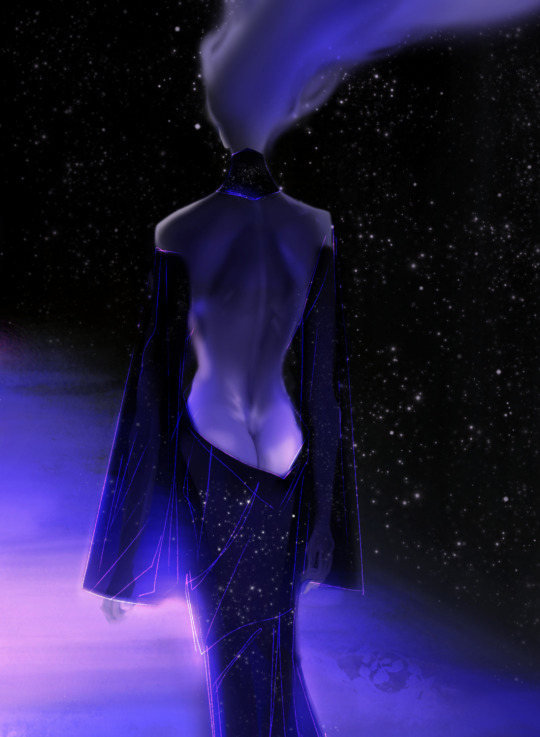
The Witness in an extremely low cut back dress, for your consideration.
@bioluminosity taught me how to shade those back muscles/spine <333 thank u
If this gets a 100 likes, I'll draw it in the dress from the front. Oh, what ever could it look like
#destiny 2#destiny 2 art#the witness#the witness destiny#this was my birthday present to myself#my friend bio helped me with tips on back/bun shading thx bio <3
227 notes
·
View notes
Text
Scry-A-Day #214
February 4, 2024 | Day 7 of Veilspun Week
Meet Helena!

Blue Wasp | Twilight Bee | Periwinkle Glimmer | Bright Shadow Eyes

Accent is titled "Lucid" ID: #37439 by bioluminosity
#fr#flight rising#fr scrying workshop#flight rising scrying workshop#fr dressing room#flight rising dressing room#flight rising veilspun#flight rising dragons#dragons#virtual dragons#virtual pets#online games
3 notes
·
View notes
Text

a little thank you gift for @bioluminosity & @riflesniper for helping me complete Witch Queen's main quest the other week ^^ 💚
#my art#d2#d2 guardian#gift art#always love to draw quick chibis#destiny fanart#no idea what the tagging in this fandom is like but hi#i was soo worried id not end the quest on time >>#oc art#oc tag#Callisto-5
36 notes
·
View notes
Text
Submitted via Google Form: Follow Up to Light at the Bottom of the Ocean
Hey, so a follow up to Previous Ask On Tumblr / Previous Ask on Wordpress First of all, thanks for the response! Construction IS the main part of my ask, though I would prefer not to rely on artificial light sources, but only as supplemental, anything constructed absolutely should channel natural light down into the depths. Like long clear cylinders built deep down into the ocean depths, maybe with mirrors in them? Something that collects natural light and is somehow beamed into the depths from the depths? As for how deep my oceans are, well, on the whole, most of it would be shallower than earth. Light does not need to penetrate into the deeper abyssopelagic zones that would only cover 20% of the oceans. The depths that I'd like to add light to would be mainly between 2000-3000m, which covers half of the oceans, but not all of it, just sections. The water temperature would probably be warmer than earth with more light (and two suns), as the majority of the land would in fact be hot deserts, but the deserts are not part of my story, everything takes place on the cooler coastal cities, on or in the oceans. 90% of the surface is ocean, and 70% of the land is a desert. The planet isn't going to be very active, but has the standard natural disasters you'd expect - though more ocean disasters I guess. A lot more tsunamis, a lot less volcanoes eruptions you know. (Ocean volcanoes are all typically inactive right?) Though, if there is anything that really adversely affects being able to make light penetrate ocean depths, I could rework something. I in fact, have no actual story yet, only a few scattered ideas/plot. I need to build the planet first.
Tex: As with the pyramids, reflecting light only works so far down into a deep and dark place. Bioluminosity would be your friend in this case, especially in terms of things like algae to provide some sort of ambient glow. I suppose this could evolve neatly with your idea if there’s very little sunlight, which is usually the reason bioluminescence evolves on Earth.
Density of water is going to be your biggest problem, outside of how far a ray of sunlight can penetrate - air is by far less dense than seawater, and seawater itself is rife with many varieties of light.
Licorice: I’d love to know more about the beings who are building these light-funnelling devices. Are they human or human-like? Do they breathe air or water? What are their reasons for wanting to bring light to the ocean depths? For the creatures that live down there, the light will be a kind of pollution, since they have evolved to live without it. The light will alter the environment of the deep ocean and may cause a massive die-off. Is this something the beings who are doing the building want? Are they aware of this likely side-effect? Will these beings still be in existence by the time the story proper begins, or will they have become extinct, and their place as top species taken by something else?
Addy: My big questions are pressure differentials and wildlife.
You asked about construction, so here we go! Water is heavy, and we get significant structural demands on existing deepwater pipes, such as the pipelines used in offshore oil drilling. Any kind of hollow tube is going to need thick walls with interior supports to prevent buckling, while a solid tube may have flexibility issues (depending on what it's made of). If your tubes go all the way to the surface, then you're going to have to deal with storms, hurricanes, etc. If the tubes only go to the top 150 meters or so, you might be in the clear. From NOAA, hurricane-caused currents generally don't seem to go far beyond 92m depth.
Seabeds are also often fairly soft, which could cause issues anchoring your light tubes. This could be circumvented by fastening them to anchors installed beneath the ocean floor. You'll need a very strong connection (imagine 300-500 cars pulling on a cable), but it's doable.
Deepwater operations also have a narrow operating window, or time in which they are allowed to work. This is because of migration patterns -- federal regulations and protections mean that offshore drilling rigs can't do new work at certain times of year. This is more of a note of hey, animals might decide to chew on the lines, and if you have a lot of these tubes, you're going to affect underwater migration patterns, especially for larger animals.
As far as floating goes, you'd probably want to have small floaty things attached to the cable. A bottom-anchored line is also going to be more easily ruptured than a boat-anchored line, but it can be done. It's been considered for a few offshore drilling rigs, though I don't think anyone has actually gone through with installing one yet.
What I'm getting at is that this is a doable concept, but it would be very expensive for your people and would have a technological barrier. Cultivated tubes for bioluminescent microbes would be easier to install along streets/main causeways and the like, and the ease of installation would also make it far cheaper. You could probably produce new microbe tubes with a process similar to making cheese. If you want to have sunlight, just know that it's going to be an expensive project with unknown payoff. As Licorice said, ecological damage is a real risk.
It might also be worth considering the idea of buried lines that extend up to the surface that way. Your people would need specialized pressure suits to deal with higher waters, but if you wanted to give your people actual sunlight, that would be the easiest option. It would cost more for materials, but it would have a lower technological barrier. I don't know what tech level your people have, so this is about all the detail I can give you.
A few notes on natural disasters, since you mentioned them. Oceanic volcanoes vary in how active they are, but there are a lot of oceanic volcanoes out there. You'll get them anywhere tectonic plates collide, and you'll get more where you get hot spots. Every atoll in existence started as a volcano. The reason we don't hear about underwater volcanoes is that we don't live near them, as they are underwater. You also get geothermal rifts, where volcanic gasses bubble out from magma deep below. For tsunamis… every tsunami starts as an earthquake.
https://sos.noaa.gov/catalog/dataset has some wonderful simulations of previous tsunamis. One of my favorites is Tsunami Historical Series: Lisbon - 1755 - Science On a Sphere. It may not show the deep-water pressure wave from a tsunami, but it does show how a tsunami moves through water. Most earthquakes will have the majority of this movement be near the surface, but deep-water quakes will affect the ocean floor. A quick glance at a research article (linked below) tells me that you get a drop in the amount of dissolved oxygen, so your people might get a form of "altitude sickness" for several weeks if there's an earthquake near them. If the earthquake is far-off (say over 300km?), then they might not see any changes. Nutrients don't see any change, which is good.
Deep-sea bottom-water environment change caused by sediment resuspension on the continental slope off Sanriku, Japan, before and after the 2011 Tohoku Earthquake is about the changes in deep ocean environments after earthquakes. A "dbar" is a unit of pressure, but you can read it as being approximately a meter.
9 notes
·
View notes
Photo
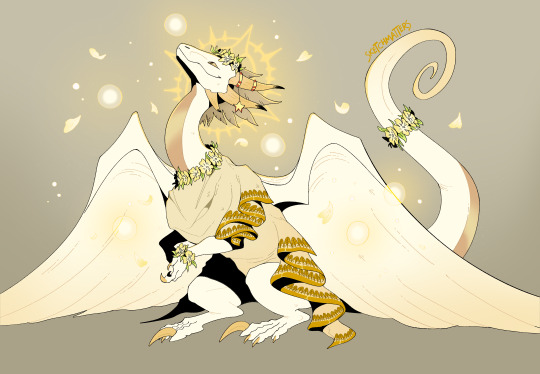
Buttercup, another Flight Rising dragon who belongs to @bioluminosity!
#flight rising#dragon#wildclaw#illustration#angel#flight rising fan art#fan art#my art#sketchmatters art#sketchmatters art tag
334 notes
·
View notes
Photo

@bioluminosity got their hands in rhulk’s bones and made him into pinhead
#mads.txt#rhulk#destiny#at one point they did something fucked up with his feet because blender lets you do that#and I went NO STOP and they wiggled hisf ucking toes at me#gd every time i look at this i start laughing. fucking pinhead
8 notes
·
View notes